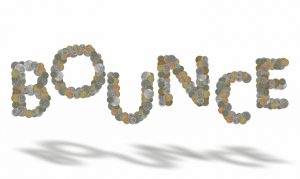As you look for ways to improve the traffic to your website, there are many factors to consider. While it may seem that just getting visitors there is enough, the reality is that this is just the first step. Your larger goal is to guide users toward your service or product once they’re at your site. But how can you really track how well you’re accomplishing this? That’s where bounce rate comes in.
What exactly is bounce rate?
Bounce rate is the percentage of people who left your website after spending time on your entrance page but not interacting with the page at all. For example, if you have a user to your website that visits but doesn’t click on anything or navigate to another page, then it will be considered a bounce. As a result, bounce rate is the percentage of visitors who likely didn’t find what they were looking for.
Normal bounce rates
The normal bounce rate for your website will vary based on the industry you’re in. When you get your free website analysis from Webstract, we can let you know what your likely bounce rate should be based on the size of your site and what exactly your website offers. As a frame of reference, consider that a normal bounce rate can range anywhere from 25 – 70%.
Why the big difference? Consider that the amount of bounces you’d expect from an ecommerce site will be significantly different than a landing page.
Things to consider if your bounce rate is higher than you’d like
The good news is that if you have a higher bounce rate than you’d like, there are several steps you can take. First of all, consider if any of these factors, any of which can raise bounce rate, affect your site:
- Single page websites
- Confusing layout or web design
- GA code that hasn’t been properly implemented
- Bad meta tags
- Poor SEO
Note that Webstract can help with any and all of these issues. Reach out to us online or call us at 855-201-5800.
Single page bounce rates are higher than multi-page bounce rates
If you have a single page site, otherwise known as a landing page, then there’s generally just a single goal: A call to action. When users don’t have any other pages to visit, and just a single link they can click on, there is naturally going to be a higher bounce rate. On a single page website, you may have a bounce rate as high as 90% and still be within the norm, while a multi-page site may have a high bounce rate if it’s higher than 40%.
Do you need help making sense of how this all applies to your company? Do you want to not just increase traffic but increase returns? Do you want more customers to interact with your content? At Webstract, we offer a wide range of services that can help with all this and more. The first step is to reach out to us for a free quote or website analysis.
